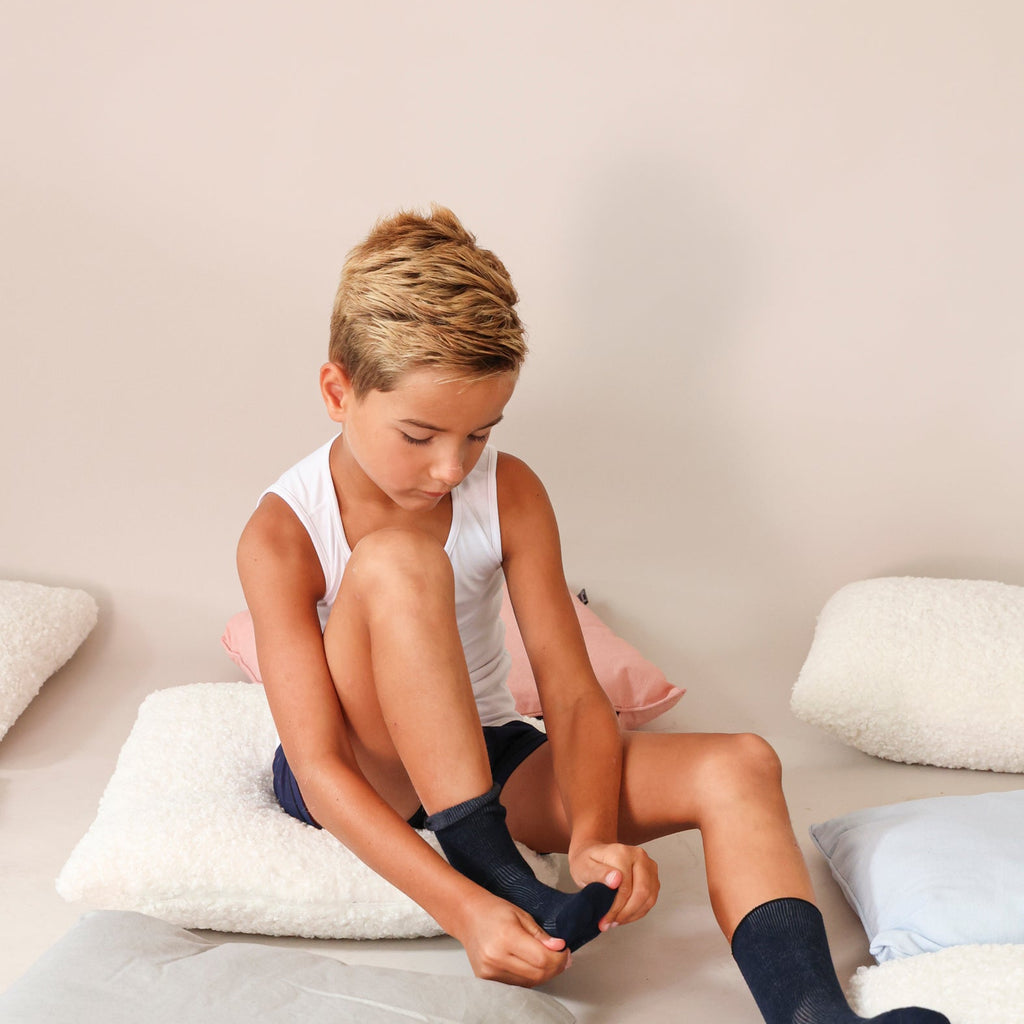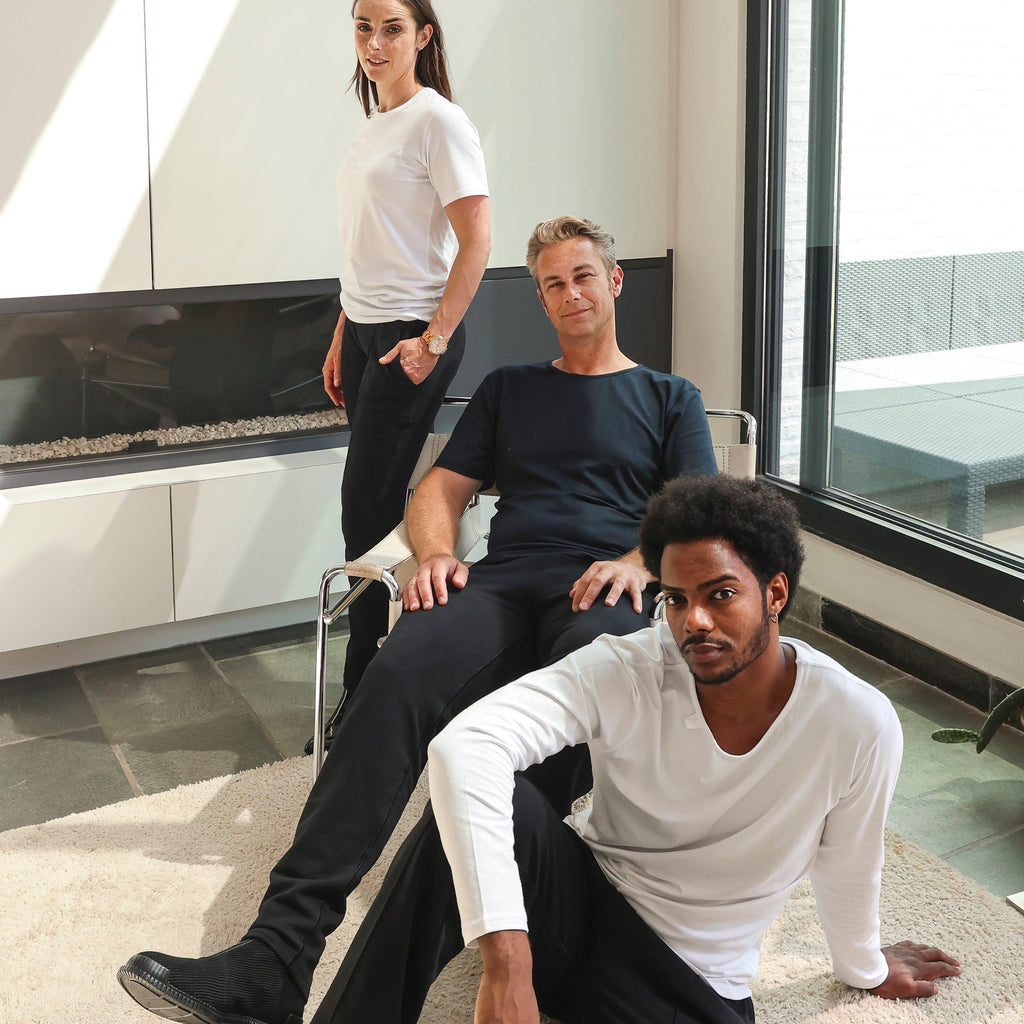From Stress to Calm: How Weighted Products Help
Weighted Products for Stress Relief & Calm
When the Day Feels Too Much Picture this: a child walks through the door after school, drops their bag in the hallway, and disappears into their room, pulling a blanket over their head. Or an adult returns home from work, drained and restless, scrolling endlessly on their phone because they can’t find a way to switch off. Stress doesn’t always look dramatic. Sometimes it’s quiet — an inability to relax, a racing mind that won’t slow down, or a body that feels “on edge” long after the day is over. The Overwhelm Explained Why does this happen? Our nervous system is designed to protect us, but it often struggles to know when to let go. For kids, this might look like meltdowns after school, tears over small frustrations, or running around the house when everyone else is ready to slow down. For adults, it may show up as sleepless nights, tension in the body, or the endless feeling of being “wired but tired.” Ordinary relaxation methods — like lying down, taking deep breaths, or even watching TV — sometimes aren’t enough. The brain needs a stronger signal that it’s safe to calm down. The Comfort of Deep Pressure This is where weighted products come in. They use a simple but powerful principle: deep pressure stimulation. It’s the same reason a firm hug feels grounding, or why swaddling soothes a baby. The steady, even weight sends calming signals to the brain, telling the body it can finally relax. Weighted products can be used in different situations: Weighted collars → calm the nervous system discreetly during study or work. Weighted blankets → help the body release tension and fall asleep more easily. Weighted cushions or lap pads → provide focus and comfort during school, homework, or long meetings. Why Weighted Products Work Research shows that deep pressure has a regulating effect on the nervous system. It lowers stress hormones like cortisol while increasing serotonin and dopamine — the “feel-good” chemicals. This combination helps people feel calmer, more focused, and more present. For children, that might mean fewer meltdowns after school or more focus in the classroom. For adults, it can mean letting go of the day’s stress and sleeping more deeply. Everyday Benefits You Can Expect Families and individuals who use weighted products often notice positive changes quickly. Many experience less stress and anxiety, as the body and mind shift out of “fight or flight.” Others find it easier to focus, which can be especially helpful during school, homework, or office work. Weighted products are also known to support deeper sleep by helping the body unwind at night. In daily life, they often bring more emotional balance, with fewer meltdowns, smoother transitions, and calmer evenings. These aren’t just “nice extras” — for many people, they are life-changing improvements to overall wellbeing. Practical Tips for Using Weighted Products Weighted items can be powerful tools, but using them in the right way makes them even more effective: Start small: Try a weighted collar for short periods. You have the effect immediately. 15 minutes of use is enough. Make it part of the routine: Use a weighted blanket before bedtime or a weighted collar during homework. Adults benefit too: Don’t hesitate to use weighted tools at work, in the car, or while relaxing at home. The Emotional Side of Stress Relief Weighted products are more than just tools. They bring peace of mind — for children and parents alike. Parents often say: “For the first time, my child could sit still during homework.” Adults describe the calmness they feel immediately after putting on the weighted collar. Stress doesn’t only live in the mind — it lives in the body. Weighted products address that physical side of stress, offering comfort without words, advice, or effort. FAQ: Weighted Products and Calm What makes weighted products calming?They use deep pressure stimulation, sending “safe” signals to the brain that reduce stress and improve regulation. Can this work for kids and adults?Absolutely. Many children and adults experience calm and focus within minutes. Are weighted products safe?Yes, when chosen with the right weight and used appropriately. For blankets, stick to around 10% of body weight. When should I use them?During homework, stressful transitions, bedtime routines, or any time calm and focus are needed. A Personal Note We often hear stories from parents and adults who were surprised at the difference a small change could make. One mother shared how her son, who used to cry and slam doors after school, now curls up with a weighted collar for twenty minutes and comes out calmer and ready to talk. One adult customer shared: ‘I used to come home completely drained after work. Now, by using my weighted collar a few times throughout the day, I end the evening with energy left. The deep pressure lowers my stress levels and keeps me from getting overstimulated and exhausted. That’s the real power of weighted products. They’re not just accessories — they’re tools for peace, for focus, and for feeling grounded in an overwhelming world. 👉 Discover our weighted collection and bring calm back into daily life.
Continue reading









